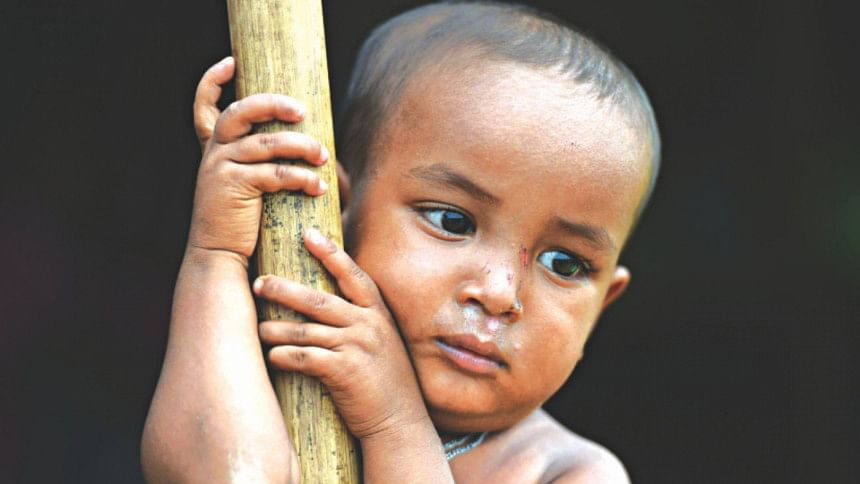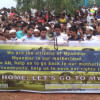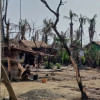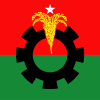Rohingya Refugees: Kids in dire need of food, healthcare

Desperate living conditions and waterborne diseases are threatening more than 320,000 Rohingya children who have fled to Bangladesh since late August, says Unicef.
"Many Rohingya refugee children in Bangladesh have witnessed atrocities in Myanmar no child should ever see, and all have suffered tremendous loss," Unicef Executive Director Anthony Lake said in a statement yesterday.
These children urgently need food, safe water, sanitation and vaccination to protect themselves from diseases that thrive in emergencies. They also need help in overcoming all they have endured, he said.
"They need education, counselling and hope."

According to the Unicef, almost 60 percent of the latest Rohingya arrivals are children, crossing at a rate of between 1,200 and 1,800 a day.
Most of the refugees are living in overcrowded and insanitary makeshift settlements. Despite an expanding international aid effort led by Bangladesh, the essential needs of many children are not being met.
Edouard Beigbeder, Unicef representative in Bangladesh, said, "The refugees are still coming, but already we can see the appalling dangers that the children are facing.
"Living in the open, with food, safe water and sanitation in desperately short supply, the risk of waterborne and other diseases is palpable."
High levels of severe acute malnutrition among young children have been found in the camps, and antenatal services to mothers and babies are lacking. Support for children traumatised by violence also needs to be expanded.
The Unicef called for an end to the atrocities targeting civilians in Myanmar's Rakhine State, and for humanitarian actors to be given immediate and unfettered access to all children affected by the violence there.
At present, Unicef has no access to Rohingya children in northern Rakhine State.
A long-term solution to the crisis in Rakhine State is needed, and the issues of statelessness and discrimination against the Rohingyas must be addressed as recommended by the Advisory Commission on Rakhine State, it said.
Ahead of an international pledging conference on October 23 in Geneva, the Unicef urged donors to respond urgently to the requirements of the updated Bangladesh Humanitarian Response Plan (HRP) released by the UN and humanitarian agencies.
It called for $434 million, which includes $76.1 million to address the immediate needs of newly-arrived Rohingya children, as well as those who arrived before the recent influx, and children from vulnerable host communities.
Expanding the provision of safe water, sanitation and improved hygiene for Rohingya children is the top priority of the appeal, amid concerns over a possible outbreak of diarrhoea and other waterborne diseases, said the Unicef.
Most Rohingya children are not fully immunised against diseases such as measles.
The UN agency said it is also focused on providing Rohingya children with learning and support services in child-friendly spaces.
WHO'S VACCINATION CAMPAIGN
The World Health Organisation said more than 700,000 people, including the newly arrived Rohingyas, have been administered oral cholera vaccine in Cox's Bazar.
The first phase of the oral cholera vaccination (OCV) campaign covered 700,487 people aged one year and above. They included 179,848 children aged between one and five, it mentioned in a statement yesterday.
The campaign was launched on October 10.
The second phase is scheduled to start early next month to give an additional OCV dose to children aged between one and five for added protection, it noted.
N Paranietharan, WHO representative in Bangladesh, said, "The coverage is commendable as the oral cholera vaccination campaign was planned and rolled out against very tight timelines."
Unicef Representative Edouard Beigbeder said, "The campaign has successfully vaccinated nearly 180,000 children aged one to five years. We will organise another round for these children to provide them with a second dose that will better protect them against this dangerous disease."
The OCV campaign was planned following a risk assessment conducted by the health and family welfare ministry, with the support of the WHO, the Unicef, the International Organisation for Migration (IOM) and Médecins Sans Frontières (MSF), in late September.
8 LAKH ROHINGYAS IN COX'S BAZAR: IOM
More than 6,900 Rohingya refugees, who were stranded in dire conditions in no-man's land at Anjumanpara on the Bangladesh side of the border, were moved by the Bangladesh army to several makeshift settlements in Ukhia and Teknaf on Thursday, the IOM said in a statement yesterday.
Some 800,000 Rohingyas are now living in the settlements, and 589,000 of them have arrived in Cox's Bazar since August 25, it mentioned.
The IOM estimated that more than half of the new arrivals are women and girls. It also identified a total of 28 collective sites and 99 locations in host communities where the refugees were staying between September 30 and October 9.
Of the Rohingya population, 33,542 (four percent) were registered and living in two UNHCR refugee camps. The remaining 96 percent were living in makeshift settlements, spontaneous sites and host communities, it added.

 For all latest news, follow The Daily Star's Google News channel.
For all latest news, follow The Daily Star's Google News channel. 








Comments